Green Michoacán – Cycling Central Mexico
Country: Mexico
From Guadalajara to Morelia
Lesson learned: Road closures can be a good thing
Most wonderful miracle: Camécuaro lake
Animals we saw: donkeys, horses, mosquitoes, cows, goats, sheep
Days on the bike: 4.5
Kilometers cycled: 348
Average kilometers per day: 77.33
Total kilometers cycled: 28,460
Cycling Central Mexico
Missed the last entry? Here it comes: Home of Mariachis and Tequila – Jalisco by bike
Blog auf Deutsch: Grünes Michoacán – Mit dem Rad quer durch Zentralmexiko
It wasn’t much fun cycling into the big city and we knew it wouldn’t be much fun leaving it either. So we took the advice of our fellow cyclists and followed a longer route to avoid the traffic. We hopped over cobblestones, crossed long puddles, train tracks and sandy paths, but we were far off the busy roads. In the outskirts I stopped for one last “Torta Ahogada” (drowned Sandwich), a dish famous in Guadalajara.
It’s a bread roll filled with cold pork meat, sprinkled with raw onion and served with so much cold tomato sauce and hot sauce on top that it gets wet and spongy enough to eat it with a spoon. One of those dishes that you either love or hate.
Some 25 kilometers south of the city we followed a little shingle road. It was pretty but we were eager to get going fast, so we returned to the main road. By now the traffic had gotten much better and we biked on a wide shoulder. We immediately noticed the two lazy weeks in Guadalajara in our legs. There was no way we would make it to today target, the ride was far too exhausting. Sad fact: it was the flattest day on our way east.
Next morning we were surprised by a long bike path that led all the way through Ocotlán and along the lake Chapala. It was well planned and easy to bike but nevertheless we saw quite some cyclists on the road and motorbikers on the bike path. Sometimes providing the infrastructure isn’t enough.
Today we entered Michoacán. This state was famous for its “Paletas” (fresh popsicles with water or milk as a basis and whole or blended fruit), “Nieves” (ice cream) and “Aguas de Sabor” (water with blended melon, lime, hibiscus, strawberry, rice with cinnamon, and many more flavors). It was a nice mix of easy highway cycling with service roads and dirt tracks.
It was a cool day in the green landscape. We increased our speed and made it to Zamora just in time before sunset. We spent the night with Anahi, Edith and Judith from warmshowers. They worked in the vegetable industry and had two cats: a grown-up shy one and a little one that loved long walks through town on a leash. I think she believes that she is a dog.
It was a great next day. In the morning we stopped on the side of the road to buy some mangos (five for ten pesos!). The saleswoman had started a little campfire and cooked a pot of nopales (cactus leaves). She wouldn’t let us go without us eating at least two tacos each. Another salesman gives us an avocado. It goes great with the taco! Only one and a half kilometers further we reached the lake Camécuaro. It wasn’t until we were standing right at the water, that I realized, that seven years ago I had spent a night camping here!
Camécuaro is Purépecha for “place to bath”. Purépecha is a language spoken by the indigenous group Purépecha from the highlands of Michoacán – which was where we would be biking today. Here at the lake we met Alejandro, who spoke Purépecha and had been performing an indigenous ritual here at the lake for a national TV show. Unfortunately we had missed it. He invited us to stay with his family in Zacapu, which was exactly where we had been planning on finishing the day.
After a little walk around the blue lake and the mangroves, we continued the ride. There were quite some climbs to do today, somewhere between 800 and 1100 meters of uphill, depending whether you believed google or doogal.
All that rain had left its marks. Everything around us shone in shiny tones of green. We biked past mango trees, strawberry fields and avocado trees. Some rock walls were covered in wet moss and the water ran down on it like it was a slow waterfall. A few meters further there grew agave plants and nopal cacti.
In many parts of Mexico there had been demonstrations against the new educational reform. The states of Oaxaca and Michoacán had especially many protesters. They had built two road blocks on the only highway. People had to either wait or take long detours via the autopista. We didn’t really mind that much, in meant that there was very little traffic on the roads. We reached the road block and were greeted by a large group of friendly and peaceful demonstrators, who were eating, smoking pipes, hanging signs and having peaceful and friendly discussions. Roberto approached the protesters and politely asked for permission to continue cycling this road. Permission equally politely granted. Sweet.
We saw the second block long before we reached it, because it was situated on top of a steep climb. The demonstrators were happy to see us, cheered us on and even pushed us up a few meters. “You think that’s steep? Wait till you actually reach the steep part of the road!” one of them smiled. Very promising words.
It was a hard day of biking but it was just one beautiful experience, person and place after the other. The higher we biked up, the fresher it got. That was nice because we were pretty sweaty. We had nearly made it to the highest point, when the rain caught up with us. We reached the village’s shop few minutes later, but we were already soaked to the bones. We changed into dry clothes and decided it was a good time for a little break. It was a small village and three quite rebellious little boys approached us. Roberto showed them the bikes and explained every part of them, while I bought some sweet bread from a travelling salesman. They were 3 pesos each.
It was one more short climb to the little village “El Pueblito” (literal translation: the little village), where we finally began rolling down the hills again. It was a short ride to zacapu, one of the oldest towns of the area. Alejandro showed us around his “little village” (that’s what he called the town with its nearly 100.000 habitants). There was a lagoon, the main plaza, several natural springs that provided the area with fresh and tasty tap water, as well as his little garden. Ajejandro grew chilies, pomegranates, nopales, lime and local tiny cherries. He came here every day to feed the chicken, collect the eggs and simply enjoy the silence.
We spent the evening with Alejandro’s friend Martin from Germany. He ran a German restaurant and sponsored us one Schnitzel with salad, rice and bread with garlic butter each. We were the only people in the restaurant and enjoyed a few glasses of wine and great company. It was the perfect ending for a perfect day on the bikes.
We began the following morning with fixing another one of Roberto’s flat tires. Lately this has become a routine. Every time there was another little piece of cable hidden in the tire. Our tires had more than 11,000 kilometers by now, but they didn’t really look very used. I guess it’s the extra weight.
We filled our bottles right at one of the springs before we started today’s ride. It was a nice and flat ride through many small villages via empty secondary roads. In between the villages people had their corn fields. It felt just like back in Germany, only with the odd palm tree or cactus.
Alejandro had checked the route that google maps had offered us and for about 40 kilometers we followed quiet and idyllic roads. Then we took a turn onto a dirt track. At first we biked in the deep tractor tracks, then we cycled right on the grass and at last it was more rocks and branches. It was a pretty ride nonetheless.
In San Pedro Puruátiro we reached the asphalt again and were greeted with a very steep but short climb that led us up to and elevated plateau. It was windy up here and we had grass and flowers to both sides of the road. That fast we changed from a Germany-like landscape into one that reminded me of Georgia or Armenia. Yesterday’s deep green had reminded me of New Zealand’s west coast and of northern Laos. Mexico is full of surprises.
Donkeys and horses spent the day eating grass on the side of the road and every now and then we were greeted by a rider with western saddle, snaffle and lasso. We stopped in “La Alberca” to enjoy the view into a teal crater lake, and had a chat with one of the farmers. He was showing two boys how to throw a lasso. He was a corn farmer, but he said that nobody gave him a fair price for his corn.
So he rather fed his family with it and sold the remains for little money. He had spent a while working in the USA and he was thinking about returning. But the “Coyote”, the person who guides people with no visa onto the other side, asked for 12,000 to 15,000 dollars. No guarantee given for the success of the crossing. I believe that those who have that much money left, would probably be better off starting a business in Mexico and making good money with it.
The wind blew stronger and the sky was colored dark grey when we left La Alberca. We quickly grabbed our rain jackets and by the moments we had zipped them closed, it started pouring down on us. The first thing we saw on the side of the road was an Esquite stand with a tarp as a roof. Esquites are my favorite Mexican street food: a cup full of corn with mayonnaise, cheese, lime and chili. I was hungry and wet, a tarp and some hot food was just what I needed now. Unfortunately the saleswoman had just sold her very last corncob.
We waited the worst rain out, then we biked quickly into the next village, where we sought shelter under the roof of the local corner shop. The local sweet-bread man stopped and we bought for pieces for 10 pesos. Back in the fancy shops of Guadalajara we paid 17 pesos for one. We shared the roof with a shy man and with Jesús, who spilled half his beer gesticulating with all his body while explaining for the fifth time the meaning of friendship and why we’re all the same.
Jesús kindly offered us to spend the night in the neighboring hut. His wife had started a little afternoon school there and nobody occupied the one-room building at night. Except for a few sacks of fertilizer we had the room to ourselves. Roberto talked to Jesús’ mother, the shop owner, just to make sure, drunk Jesús wouldn’t have forgotten his kind offer in the morning. We prepared some noodles and spent the night on the floor in between sacks of shit for the fields.
The rain was lighter at 8 am. We tried to make it to Morelia by 10.30, so we better got started. After a while we had left the last hill behind us and rolled down into the valley, leaving a bright double rainbow behind us. Traffic got worse soon, but it was easy biking as compared to Guadalajara.
Maria’s country home was situated northeast of town, so we crossed the western suburbs to get into town and the northern ones to get out again. Maria was mother to Roberto’s university friend Andrea. She had moved here from Germany many years ago. Her house and garden were all green, wooden and very comfortable. There were three dogs, a cat, a lot of wooden furniture and many plants. And there was German bread! I couldn’t believe it.
In Morelia we had made more than half the way to Mexico City but by far not half the elevation gain. There was still quite a bit of climbing left for us. More on that in the next blog: When culinary dreams come true – Cycling from Michoacán to Mexico City

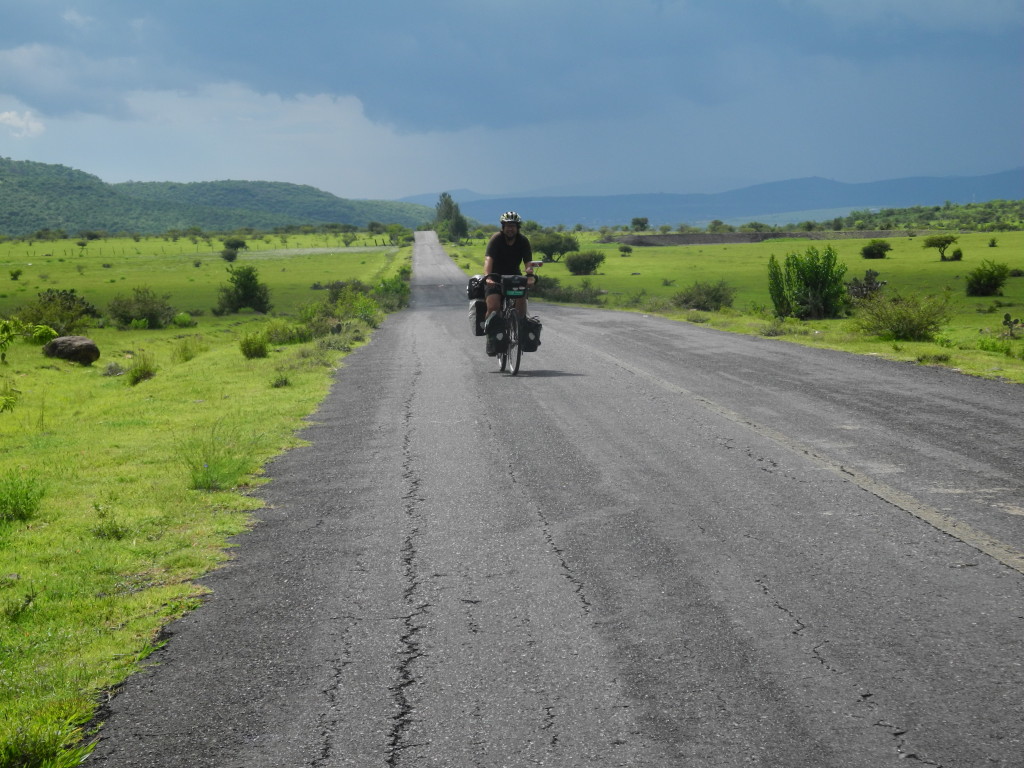
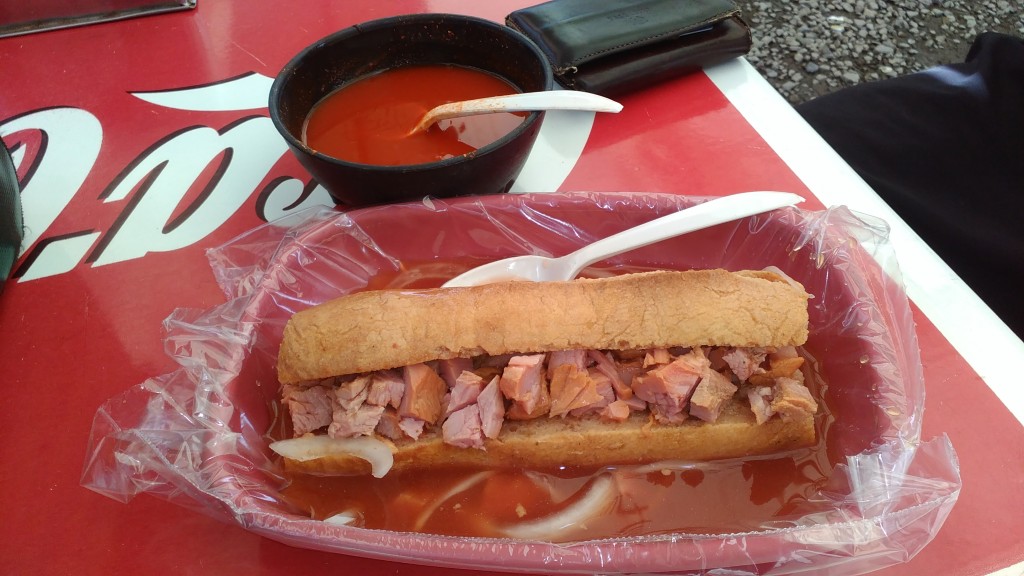
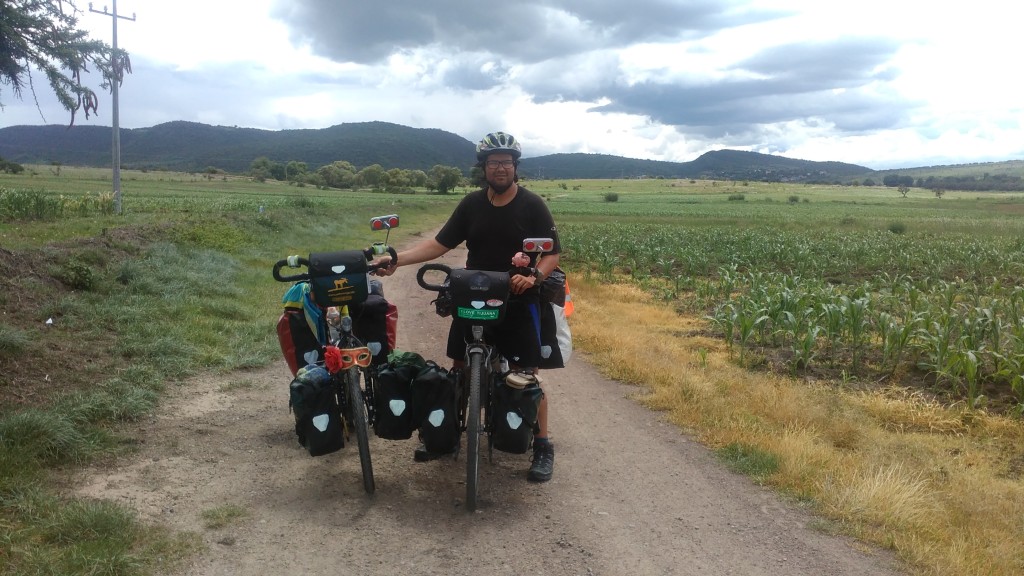
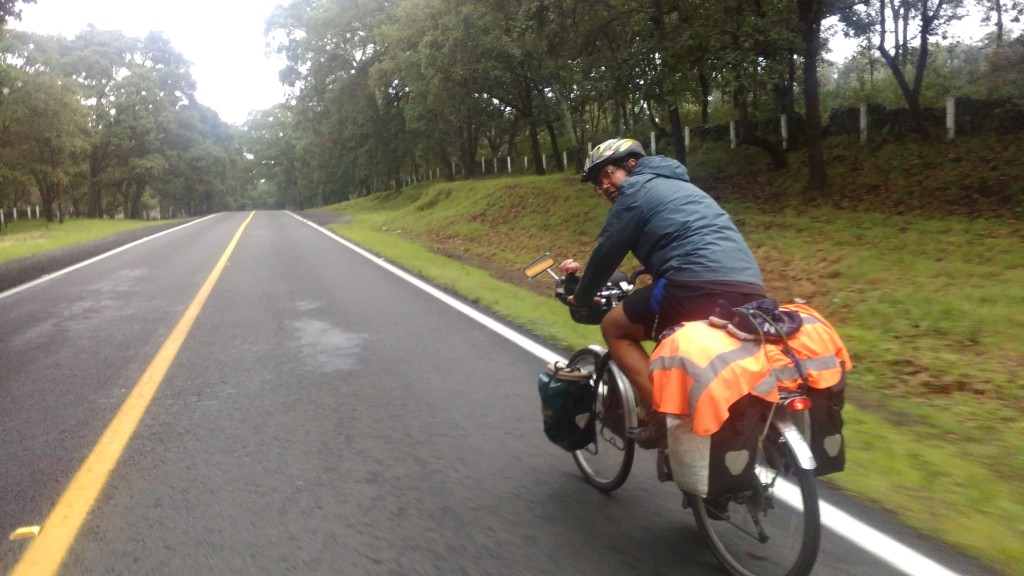
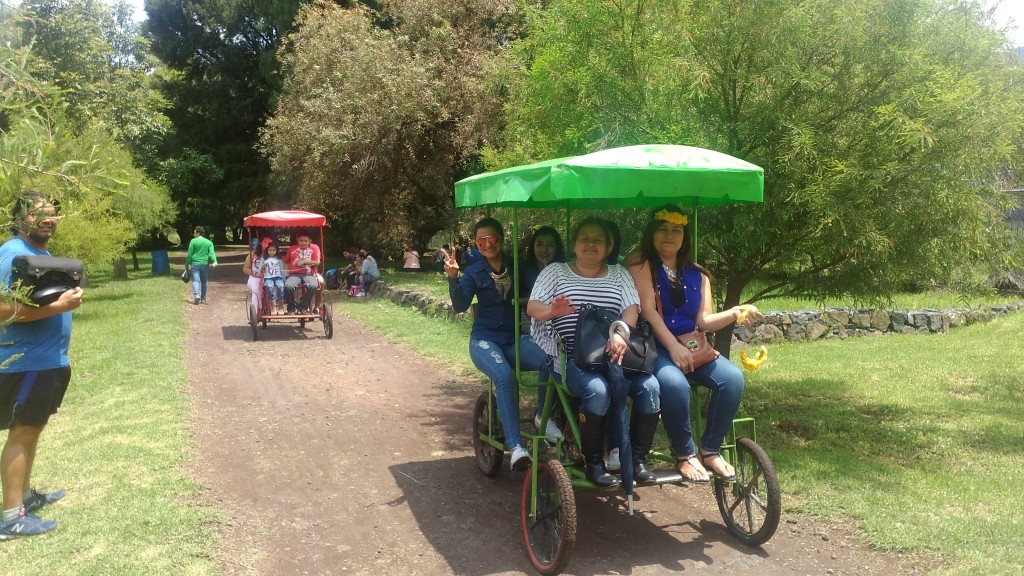
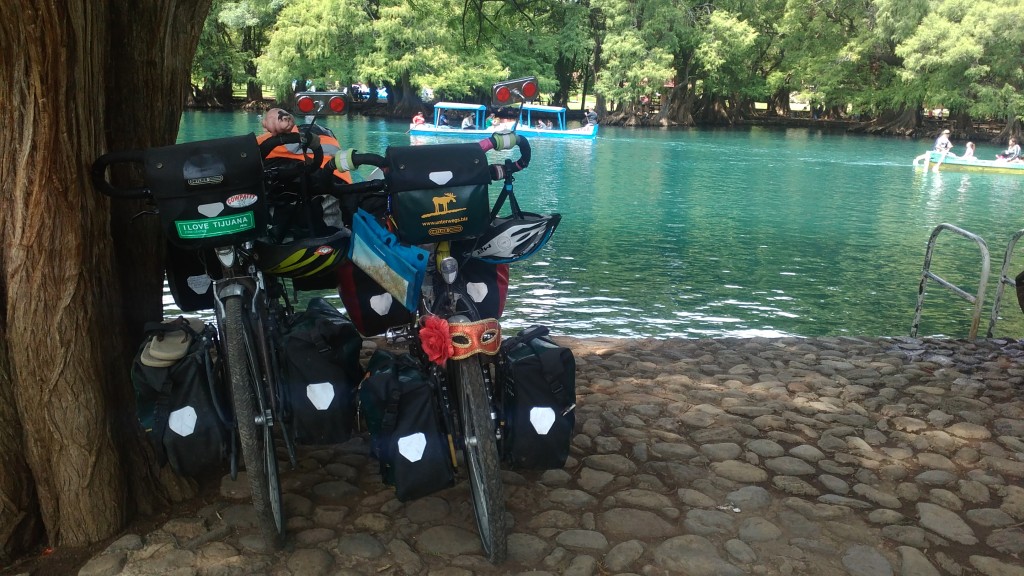
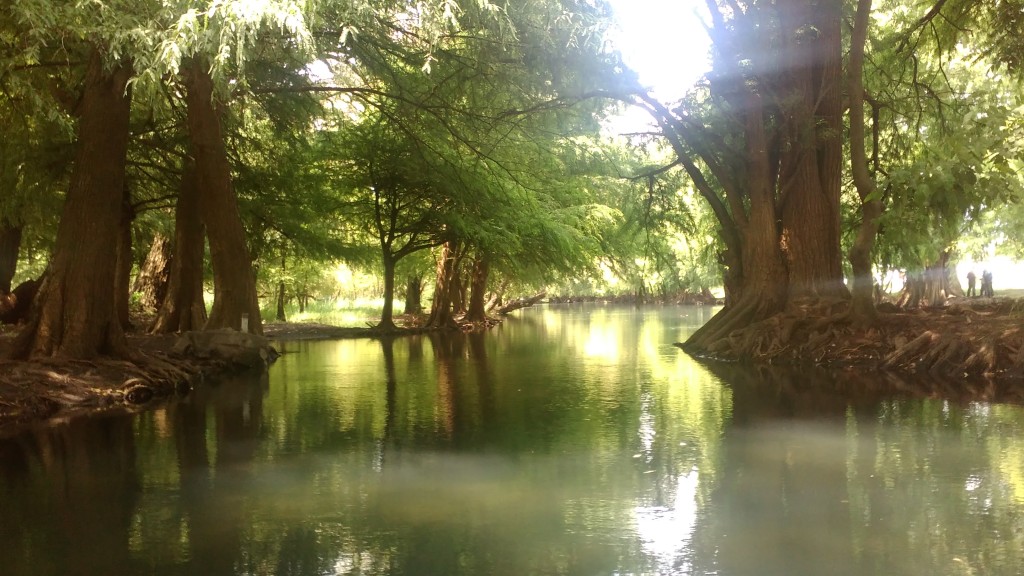
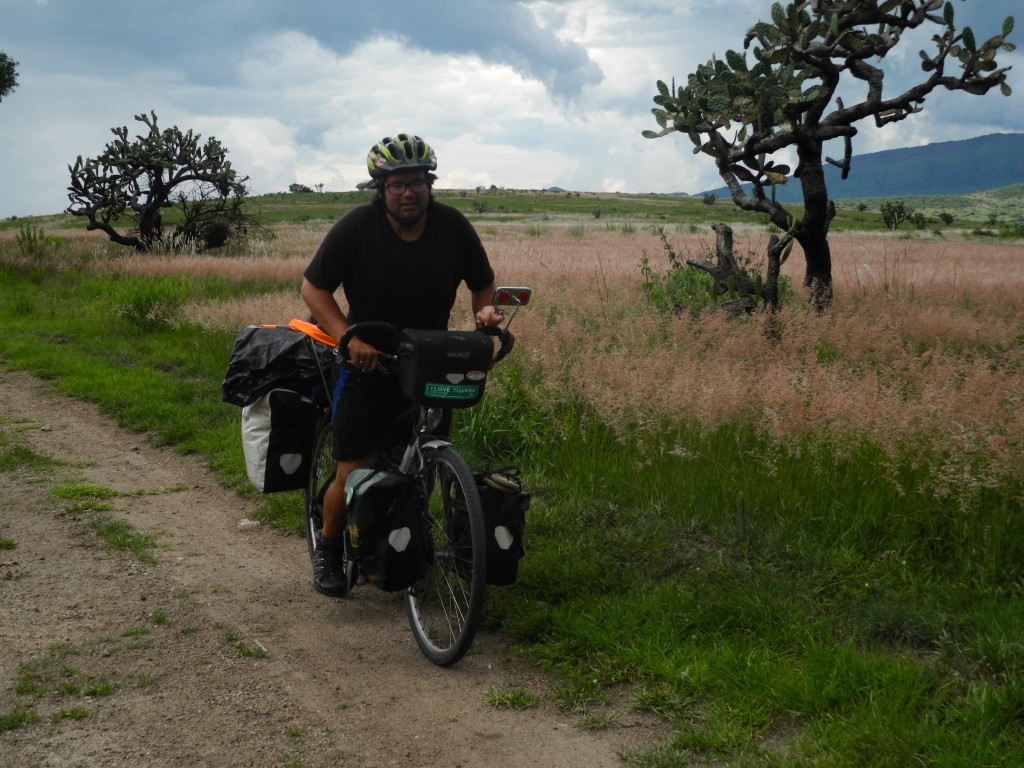
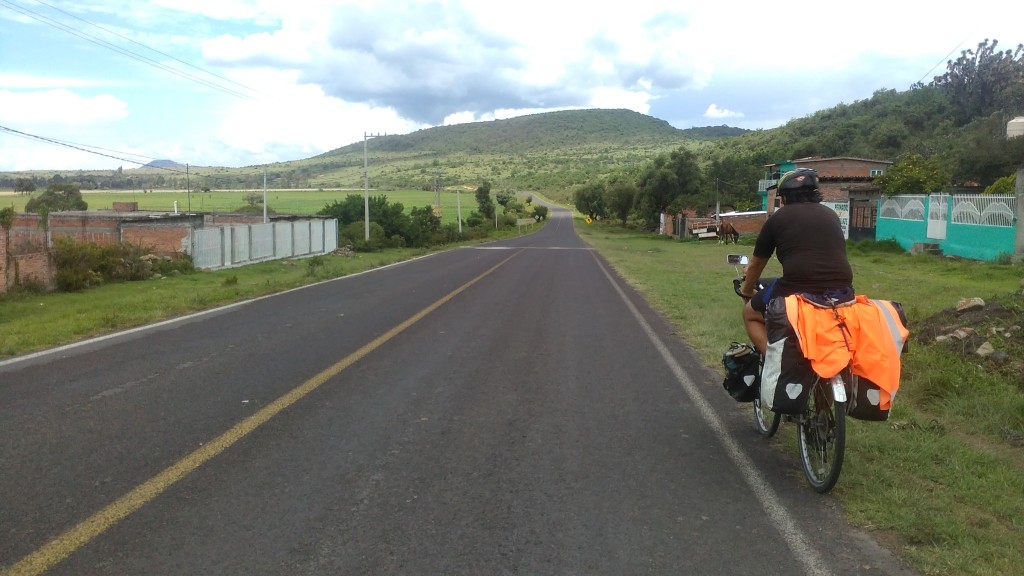
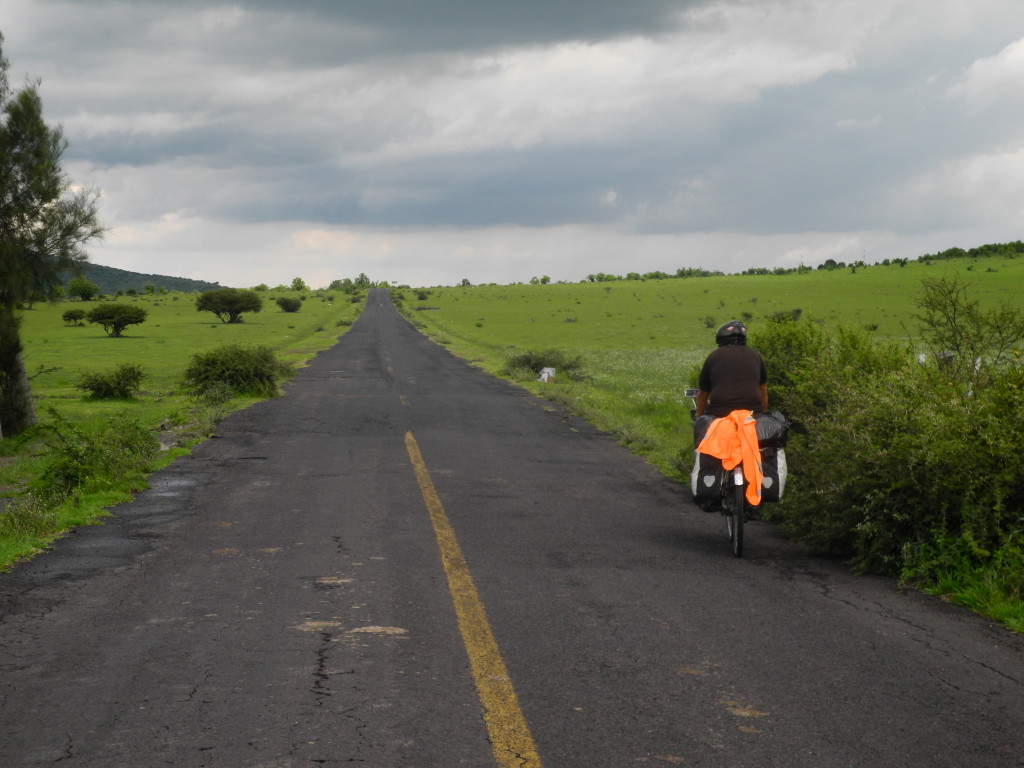
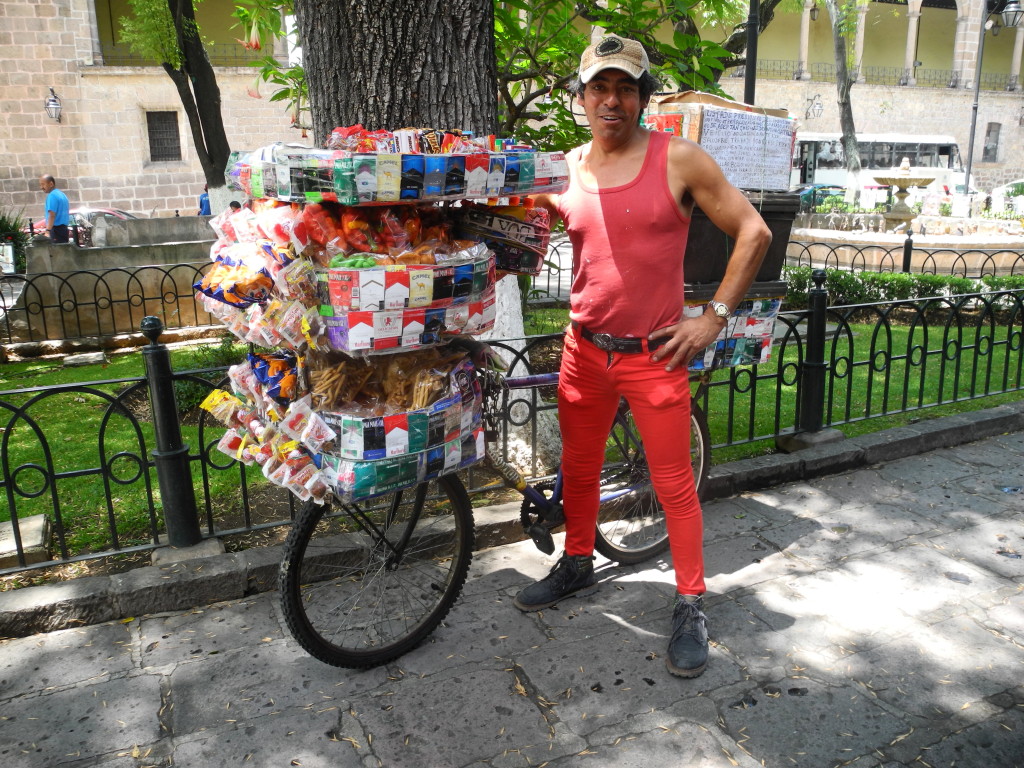
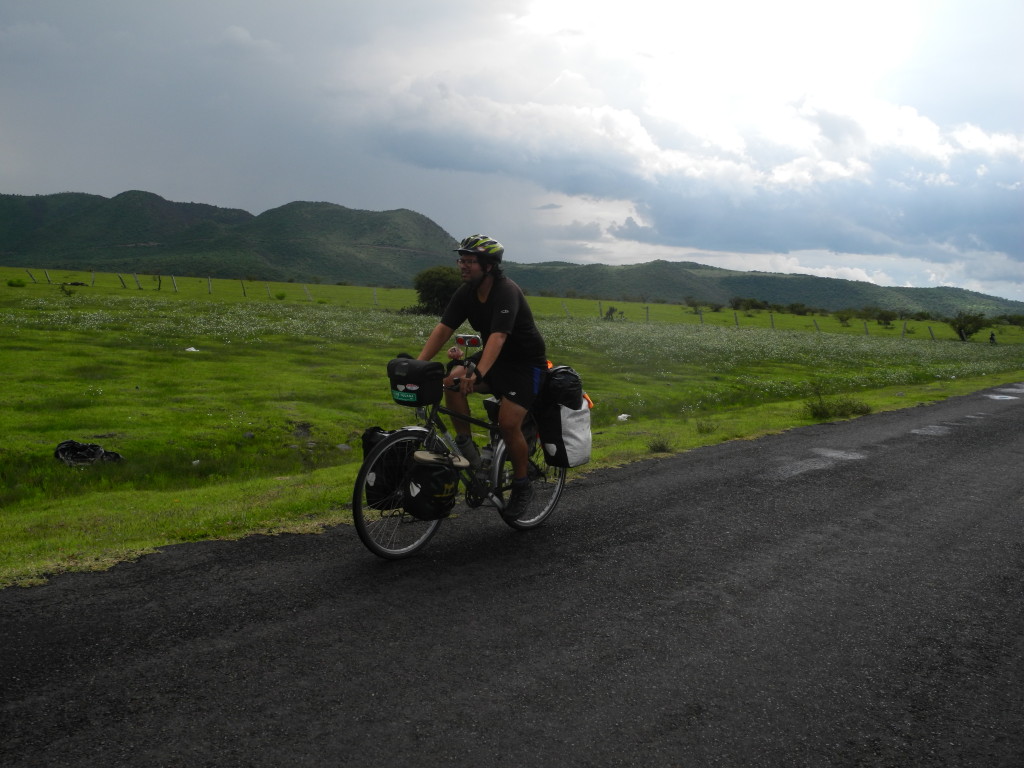
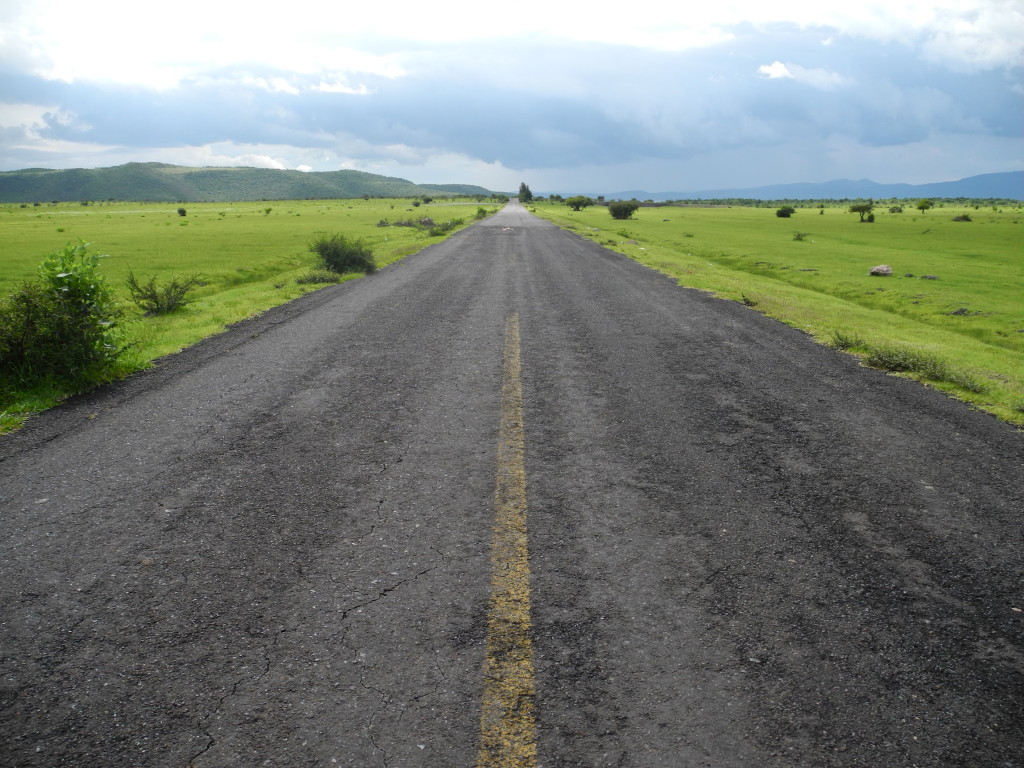
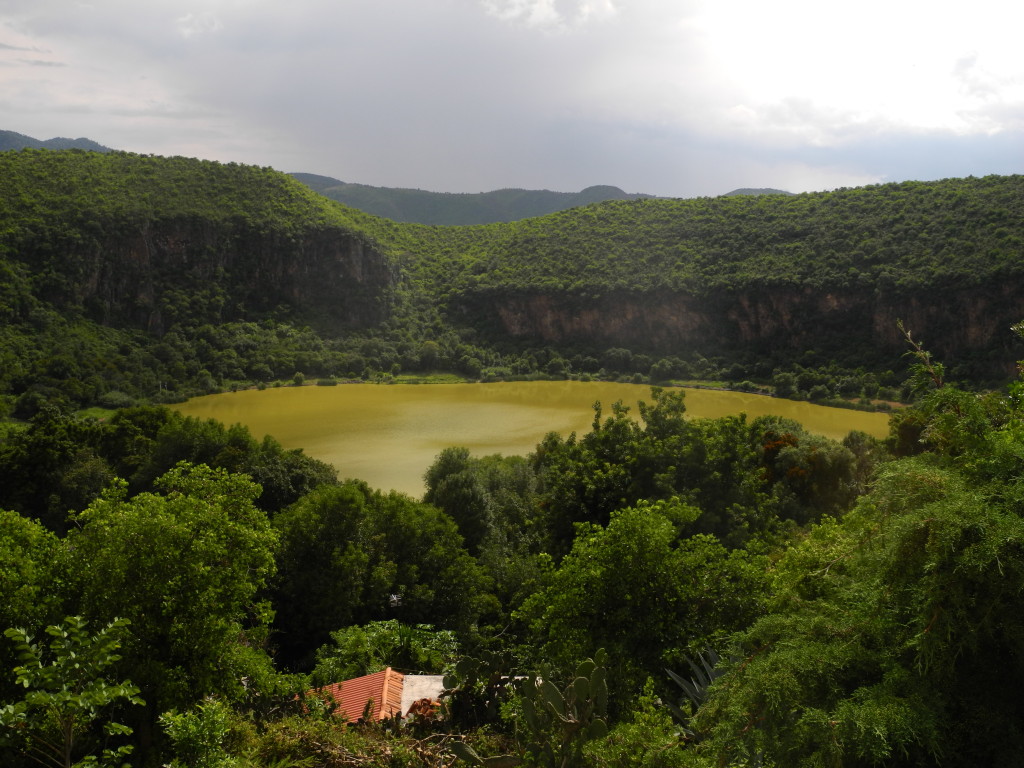
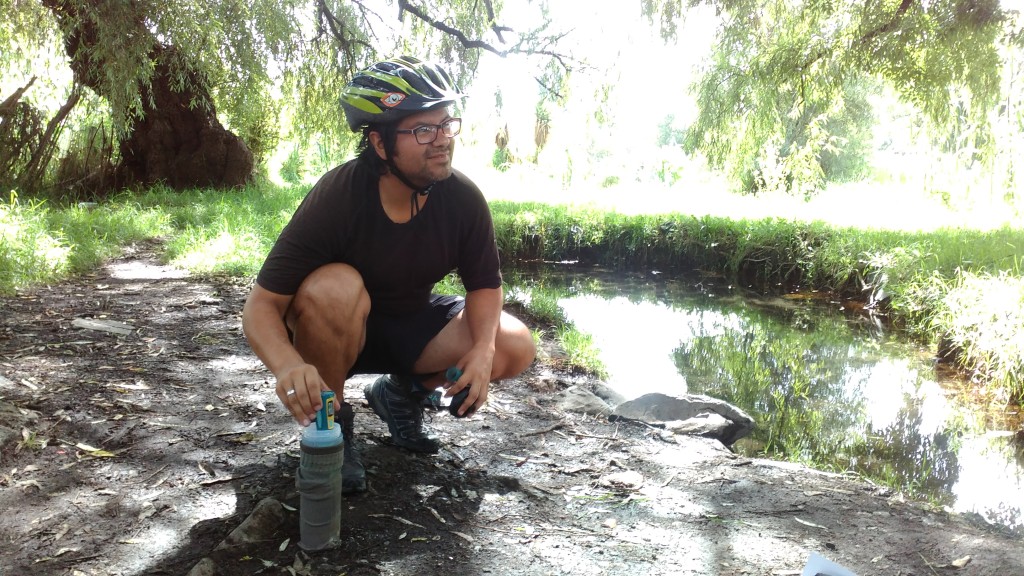
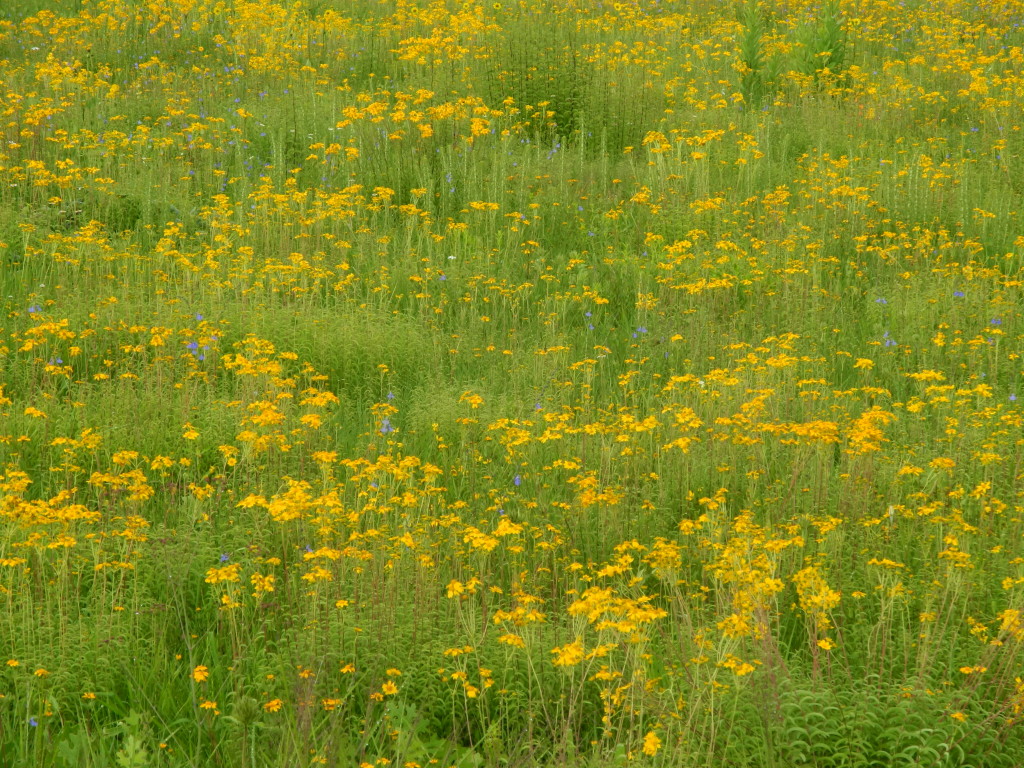
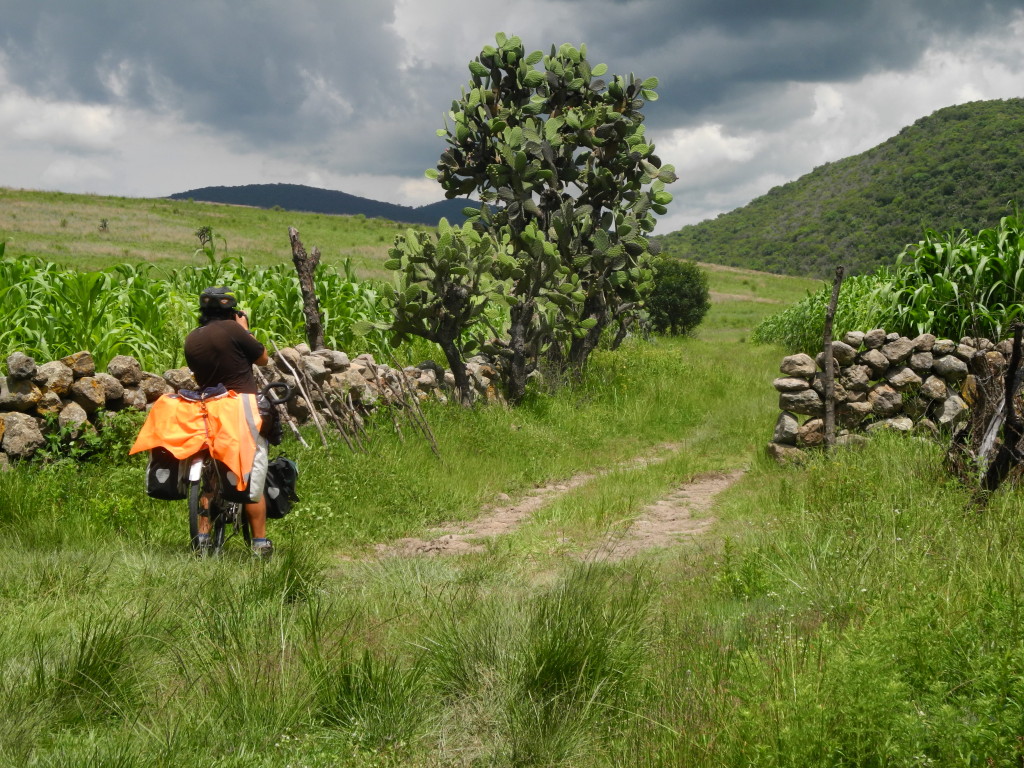












Pingback: Grünes Michoacán – Mit dem Rad quer durch Zentralmexiko - Tasting Travels
Pingback: When culinary dreams come true – Cycling from Michoacán to Mexico City - Tasting Travels
Hi ihr Beiden.
Ich bin der Papa von Tanja und (der reserve-Papa) von Florian.
Meldet euch doch einmal bei mir.
Liebe Grüße, Walter